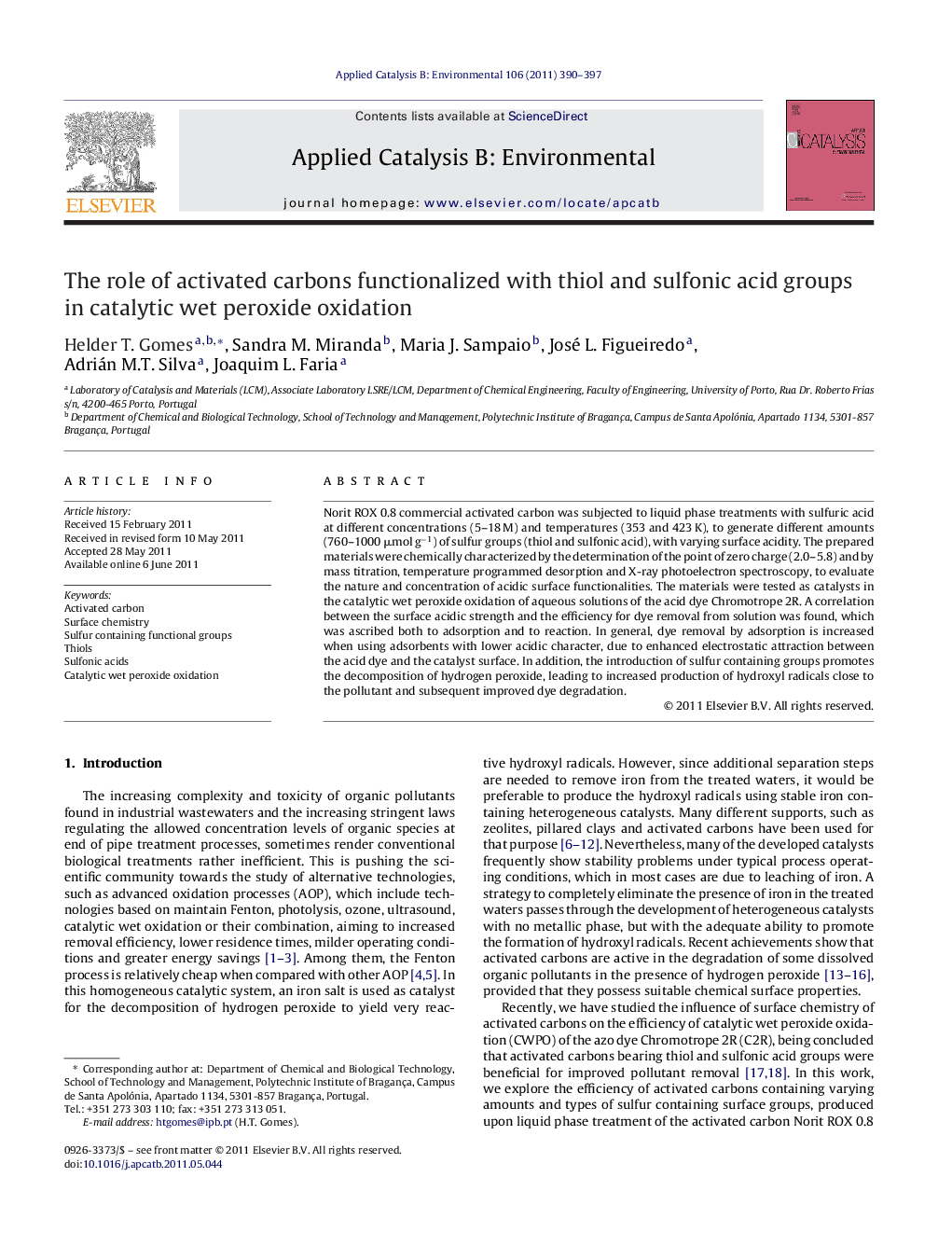| Article ID | Journal | Published Year | Pages | File Type |
|---|---|---|---|---|
| 46915 | Applied Catalysis B: Environmental | 2011 | 8 Pages |
Norit ROX 0.8 commercial activated carbon was subjected to liquid phase treatments with sulfuric acid at different concentrations (5–18 M) and temperatures (353 and 423 K), to generate different amounts (760–1000 μmol g−1) of sulfur groups (thiol and sulfonic acid), with varying surface acidity. The prepared materials were chemically characterized by the determination of the point of zero charge (2.0–5.8) and by mass titration, temperature programmed desorption and X-ray photoelectron spectroscopy, to evaluate the nature and concentration of acidic surface functionalities. The materials were tested as catalysts in the catalytic wet peroxide oxidation of aqueous solutions of the acid dye Chromotrope 2R. A correlation between the surface acidic strength and the efficiency for dye removal from solution was found, which was ascribed both to adsorption and to reaction. In general, dye removal by adsorption is increased when using adsorbents with lower acidic character, due to enhanced electrostatic attraction between the acid dye and the catalyst surface. In addition, the introduction of sulfur containing groups promotes the decomposition of hydrogen peroxide, leading to increased production of hydroxyl radicals close to the pollutant and subsequent improved dye degradation.
Graphical abstractFigure optionsDownload full-size imageDownload as PowerPoint slideHighlights► Activated carbons are successfully modified with thiol and sulfonic acid groups. ► Modified activated carbons show increased efficiency in CWPO of Chromotrope 2R. ► Higher acidic strength of modified activated carbons increases efficiency in CWPO. ► Thiol groups on activated carbons promote the production of hydroxyl radicals.
